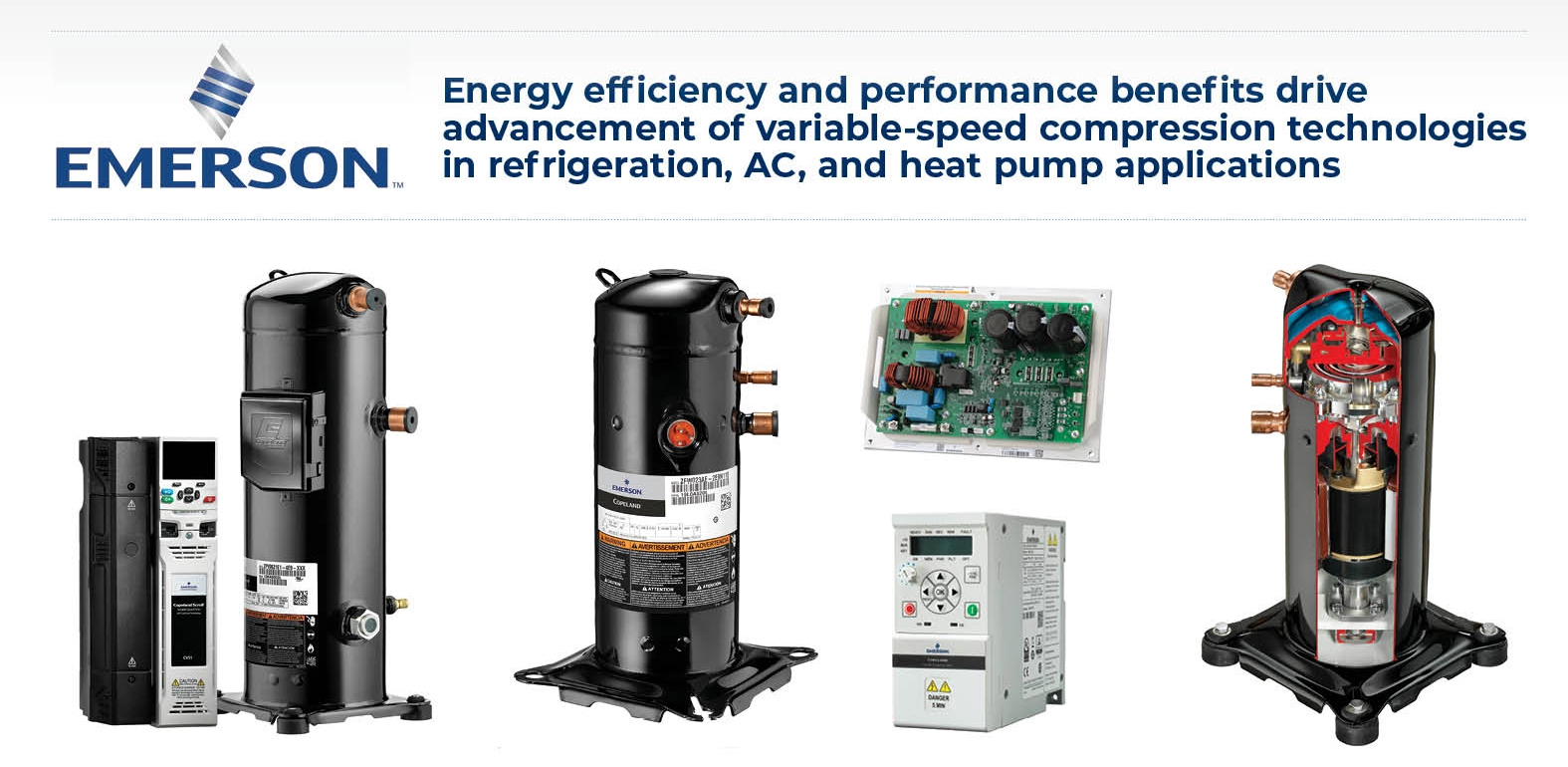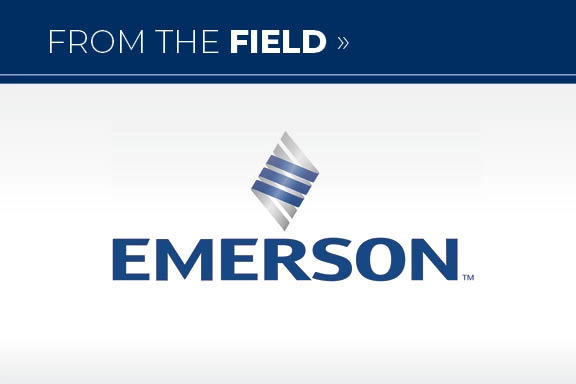
Across the spectrum of residential and commercial HVACR applications, measures to improve energy efficiencies are underway. The equipment used to provide comfort cooling/heating and commercial refrigeration is consistently among the highest consumers of electricity in households and retail buildings. As regulations and corporate sustainability initiatives drive the HVACR industry toward comprehensive energy-efficiency improvements, equipment manufacturers are working on the next generation of equipment strategies.
Ushering in a new era of eco-friendly HVACR equipment — and the increasing adoption of energy-efficient heat pumps — will require innovations and new approaches to compression technologies. Enter the concept of variable-capacity modulation. Rather than relying on stationary, fixed-speed compression strategies that are sized to meet maximum load conditions, variable-speed compressors and supporting strategies modulate their capacities to match ever-changing cooling and heating requirements.
Exploring the benefits of variable-capacity modulation
Compared to traditional fixed-speed compressors that cycle on and off to meet varying cooling and/or refrigeration loads, variable-speed compressors run continuously and modulate their capacities as needed. A variable-capacity modulation compression strategy significantly lowers energy consumption by reducing compressor cycling and eliminating the energy surges that occur during compressor start-ups. In addition to these energy-efficiency gains, variable-capacity modulation delivers a variety of other performance-related benefits:
Enabling softer start-ups and transitions for less compressor strain and longer compressor life
Providing faster temperature pull-downs
Maintaining tighter suction pressures and precise setpoint temperatures
Delivering consistently even air temperature and humidity control for improved human comfort
Supporting sustainability initiatives and net zero targets with the use of lower-global warming potential (GWP) refrigerants
Variable-speed compression technology is based on the pairing of a scroll compressor and a variable frequency drive (VFD). Many HVACR market stakeholders are familiar with the use of VFDs to control the speed and efficiency of a variety of motor-driven system components, such as: system fans, pumps, and other equipment found in commercial and residential environments. Combined with scroll compressors that leverage brushless permanent magnet (BPM) motors, VFDs enable smooth variable-capacity modulation and maximum energy efficiency.
Because of its superior efficiency and performance profile, variable-speed compression solutions have historically been considered suitable for the most challenging load requirements, such as those with demanding cooling ranges or high heating-to-cooling ratios. While this remains true today — especially in meeting emerging cold climate heat pump (CCHP) applications — variable-speed compression solutions are now considered among the few remaining technological strategies capable of meeting next-generation, energy-efficiency requirements.
To date, concerns about high first costs and application complexities have slowed the adoption of variable-speed compression technologies. But these perceptions are quickly changing. HVACR market trends, sustainability drivers, and technological advancements are removing barriers to entry. Modern variable-speed compression technologies are integrated and easier to deploy, while the declining costs of powered electronics are making them more affordable and accessible to a wider base.
Existing and emerging applications for variable-speed compression
Commercial and residential HVACR markets have led the way in the adoption of variable-speed compression strategies. But with growing market demand for energy-efficient heat pump technologies and more sustainable commercial refrigeration equipment (CRE), variable-speed compression technology is a logical choice for enabling next-generation efficiency and performance improvements.
Residential HVACR and heat pumps
In terms of validating its effectiveness, variable-speed compression technology has already demonstrated multiple benefits in residential comfort cooling applications. Compared to standard fixed-speed compressors, variable-speed compressors deliver significant improvements in cooling efficiencies — more than 25 percent in seasonal energy-efficiency ratio (SEER) gains. In residential heat pump applications, the same variable-speed compression technology delivers more than 31 percent improvements in heating seasonal performance factor (HSPF) compared to leading heat pump compression solutions.
As part of a variable-speed compression solution, integration between the VFD and the compressor’s brushless permanent magnet motor dynamically manages compressor operation to ensure maximum efficiency.
It’s also important to understand that variable-speed technology does not necessarily displace traditional fixed-speed compressors in all scenarios. For example, fixed-speed scroll compressors may provide sufficient efficiencies and performance in warmer-climate heat pump scenarios. And in more challenging cold climate heat pump scenarios, multiple fixed-speed compressor configurations (i.e., parallel) also have proven effective.
Two-stage scroll compressors offer a middle ground between fixed- and variable-speed compression technologies — modulating at 65 and 100 percent capacities — while offering a single-compressor solution. Various types and configurations of fixed-speed, two-stage, three-stage, and variable-speed compressors — including those with enhanced vapor injection (EVI) capability — are the enabling technologies for overcoming next-generation heat pump challenges.
In addition, the integration of economized vapor injection (EVI) and scroll compression technology — which is already commonplace across Asia and Europe — represents the promise of improved energy efficiencies and high performance in residential CCHP applications. EVI-enabled scroll compression technology provides economized circuit sub-cooling which increases system capacity and efficiency.
Commercial heat pumps
Variable-capacity compression solutions for commercial heat pumps offer an expanded capacity range and scalability to adapt to a much wider set of application requirements. Variable-speed compression technologies have already been deployed successfully in various global regions and will soon be introduced in the U.S. — particularly to address more challenging CCHPs and high peak-load scenarios.
To meet varying capacity requirements in the commercial sector, multiple fixed-speed compressors are often used in parallel, including tandem (pair) and trio (three) compressor configurations. Both two-stage and variable-speed compression solutions offer not only a single-compressor alternative, but they also deliver improved energy efficiency and performance.
Commercial refrigeration equipment
To date, variable-speed compression technology has been largely under-utilized in commercial refrigeration applications. But as original equipment manufacturers (OEMs) face stricter energy-efficiency regulations from the Department of Energy (DOE) — and seek competitive differentiation from an ENERGY STAR® certification — more are integrating variable-speed compression solutions into their design cycles. And as the commercial refrigeration industry continues its transition to lower-GWP refrigerants, many OEMs are combining design cycles to introduce variable-speed solutions with lower-GWP refrigerant options.
Variable-speed scroll compression solutions are available in broad capacity ranges to help OEMs throughout the commercial refrigeration equipment supply chain. In self-contained coolers, freezers, and display cases, variable-speed compression delivers 20 to 30 percent energy-efficiency improvements, while enabling precise load matching and increased reliability to help end users protect food quality and safety. For self-contained OEMs, one variable-speed compressor can cover a wider range of refrigeration capacities, reducing the need for multiple compressor SKUs for varying equipment sizes.
In remote condensing units, variable-speed compression also enables multiplexing configurations, where one condensing unit can support multiple fixtures. Even in retrofit scenarios on an existing centralized rack system, installing a variable-speed compressor on a fixed-speed refrigeration rack can enable all the benefits of variable-capacity modulation on the entire rack, including:
Improved temperature control
Lower energy consumption
Longer compressor lifespan
Scroll compression with integrated EVI technology has also proven effective in demanding commercial heat pump applications, such as those in high peak-load or CCHP scenarios.
Developing the next generation of compression technology
By enabling variable-capacity modulation in HVACR and heat pump applications, variable-speed compression technology offers a powerful combination of energy efficiency and performance improvements. Emerson is committed to developing the next generation of compression solutions for all these existing and emerging applications.
Through significant research and development (R&D) investments in compression technologies, collaborations with industry organizations, and partnerships with leading OEMs, variable-speed compressors are helping to improve energy efficiencies in comfort cooling/heating, commercial refrigeration, and emerging heat pump technologies. Our recently launched Copeland™ variable-speed scroll compressor for CRE was recognized at the International Air-conditioning, Heating, and Refrigeration (AHR) Expo as the 2023 Innovation Award winner.
For more information on this and other Emerson HVACR technologies, please visit our website.
Ken Monnier
Chief Technology Officer, HVACR Technologies
Emerson Commercial & Residential Solutions
Ken Monnier has more than 38 years of experience in the HVACR industry. Since joining Emerson in 1984, he has held positions of increasing responsibility in the areas of new product engineering, technology management, and innovation. Much of his career has focused on the design and technical leadership of various scroll compressor platforms as well as related electronics and controls. In his current role, he manages the strategic alignment of key technology-based platform teams, including applied research, technical services, global engineering infrastructure, and The Helix Innovation Center. He has been a featured speaker at ASHRAE technical seminars, is a member of the American Society of Mechanical Engineers and has authored/co-authored several industry technical papers and publications, and currently holds 16 patents. Ken earned a bachelor’s degree in mechanical engineering from the University of Dayton and serves on the School of Engineering Advisory Council and Industrial Advisory Committee at the University of Dayton.


